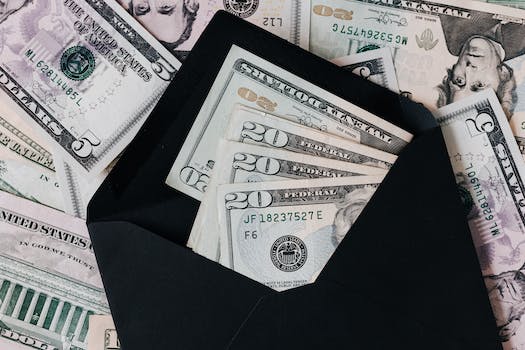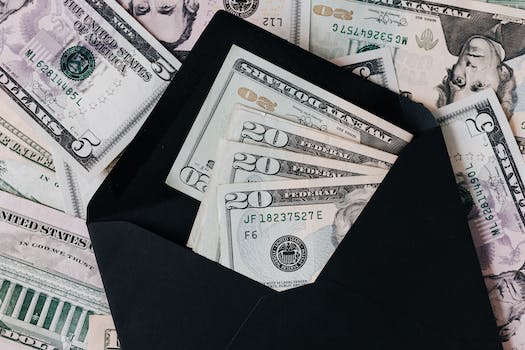How To Save Your Budget
“Smart tips to stretch your dollars further.”
Introduction
Introduction: Saving money is an essential part of financial planning. It helps you to achieve your financial goals and secure your future. However, it can be challenging to save money, especially when you have a limited budget. In this article, we will discuss some practical tips on how to save your budget and improve your financial situation.
10 Simple Ways to Cut Your Monthly Expenses
Are you tired of living paycheck to paycheck? Do you want to save more money but don’t know where to start? Cutting your monthly expenses is a great way to start saving money. Here are 10 simple ways to cut your monthly expenses and save your budget.
1. Create a budget
The first step to cutting your monthly expenses is to create a budget. A budget will help you track your income and expenses and identify areas where you can cut back. Start by listing all your monthly income and expenses, including rent, utilities, groceries, and entertainment. Then, identify areas where you can cut back, such as eating out less or canceling subscriptions you don’t use.
2. Cut back on eating out
Eating out can be expensive, especially if you do it frequently. Instead of eating out, try cooking at home more often. Not only is it cheaper, but it’s also healthier. You can also try meal prepping to save time and money.
3. Cancel subscriptions you don’t use
Do you have subscriptions you don’t use, such as gym memberships or streaming services? Cancel them to save money. You can always sign up again later if you decide you want them.
4. Use coupons and promo codes
Coupons and promo codes can save you money on everything from groceries to clothing. Before making a purchase, search for coupons and promo codes online. You can also sign up for email newsletters from your favorite stores to receive exclusive discounts.
5. Buy generic brands
Generic brands are often just as good as name brands but cost less. When shopping for groceries or household items, opt for generic brands to save money.
6. Use public transportation
If you live in a city with public transportation, consider using it instead of driving. Not only will you save money on gas and maintenance, but you’ll also reduce your carbon footprint.
7. Cut back on energy usage
Reducing your energy usage can save you money on your monthly utility bills. Turn off lights and electronics when you’re not using them, and adjust your thermostat to save on heating and cooling costs.
8. Shop secondhand
Shopping secondhand is a great way to save money on clothing and household items. Check out thrift stores, consignment shops, and online marketplaces to find great deals.
9. Negotiate bills
Did you know you can negotiate your bills? Call your service providers, such as your cable or internet company, and ask if they can lower your bill. You may be surprised at how much you can save.
10. Plan ahead
Planning ahead can help you save money in the long run. For example, if you know you’ll need a new car in a few years, start saving now. You can also plan your meals and grocery shopping to avoid impulse purchases and save money.
Cutting your monthly expenses may seem daunting, but it’s a great way to save money and improve your financial situation. By creating a budget, cutting back on eating out, canceling subscriptions you don’t use, using coupons and promo codes, buying generic brands, using public transportation, cutting back on energy usage, shopping secondhand, negotiating bills, and planning ahead, you can save your budget and achieve your financial goals.
Creating a Realistic Budget: Tips and Tricks

Creating a Realistic Budget: Tips and Tricks
Managing your finances can be a daunting task, especially when you have bills to pay and unexpected expenses to cover. However, creating a realistic budget can help you take control of your finances and save money in the long run. Here are some tips and tricks to help you create a budget that works for you.
1. Track your expenses
The first step in creating a budget is to track your expenses. This means keeping track of every penny you spend, from your morning coffee to your monthly rent payment. You can use a spreadsheet or a budgeting app to help you keep track of your expenses. Once you have a clear picture of where your money is going, you can start to identify areas where you can cut back.
2. Set realistic goals
When creating a budget, it’s important to set realistic goals. This means setting goals that are achievable and that you can stick to. For example, if you want to save money on groceries, set a goal to reduce your grocery bill by 10% rather than trying to cut it in half. Setting realistic goals will help you stay motivated and make it easier to stick to your budget.
3. Prioritize your expenses
When creating a budget, it’s important to prioritize your expenses. This means identifying the expenses that are essential, such as rent, utilities, and groceries, and prioritizing them over non-essential expenses, such as eating out or buying new clothes. By prioritizing your expenses, you can ensure that you have enough money to cover your essential expenses and still have some money left over for non-essential expenses.
4. Use cash
Using cash can be a great way to stick to your budget. When you use cash, you can physically see how much money you have left and it can help you avoid overspending. Try withdrawing a set amount of cash each week and using it to pay for your non-essential expenses. Once the cash is gone, you’ll know that you’ve reached your budget limit for the week.
5. Look for ways to save money
When creating a budget, it’s important to look for ways to save money. This can include things like cutting back on your cable bill, shopping around for cheaper car insurance, or using coupons when you go grocery shopping. By looking for ways to save money, you can reduce your expenses and free up more money to put towards your savings goals.
6. Review your budget regularly
Finally, it’s important to review your budget regularly. This means taking a look at your expenses and income on a regular basis to ensure that you’re staying on track. If you find that you’re overspending in certain areas, you may need to adjust your budget or look for ways to cut back. By reviewing your budget regularly, you can ensure that you’re making progress towards your financial goals.
In conclusion, creating a realistic budget can help you take control of your finances and save money in the long run. By tracking your expenses, setting realistic goals, prioritizing your expenses, using cash, looking for ways to save money, and reviewing your budget regularly, you can create a budget that works for you and helps you achieve your financial goals. Remember, creating a budget takes time and effort, but the rewards are well worth it.
The Benefits of Meal Planning for Saving Money
Are you tired of constantly overspending on groceries and eating out? Do you want to save money and stick to a budget? One solution is meal planning. Not only does it save you money, but it also saves you time and reduces food waste. Here are some benefits of meal planning for saving money.
Firstly, meal planning allows you to create a grocery list and stick to it. When you go to the grocery store without a plan, you are more likely to buy unnecessary items and overspend. However, when you plan your meals for the week, you can create a list of the ingredients you need and avoid buying anything that is not on the list. This helps you stay within your budget and avoid impulse purchases.
Secondly, meal planning helps you take advantage of sales and discounts. When you plan your meals in advance, you can check the weekly ads and plan your meals around the items that are on sale. This allows you to save money on groceries and take advantage of discounts. Additionally, buying in bulk can also save you money in the long run. For example, if chicken breasts are on sale, you can buy a large pack and freeze the extra portions for future meals.
Thirdly, meal planning reduces food waste. When you plan your meals, you can use up ingredients that you already have in your pantry or fridge. This helps you avoid buying duplicate items and wasting food. Additionally, you can plan meals that use similar ingredients, which reduces the likelihood of having leftover ingredients that go to waste. By reducing food waste, you are not only saving money, but you are also helping the environment.
Fourthly, meal planning saves you time. When you plan your meals in advance, you can prepare ingredients ahead of time and save time during the week. For example, you can chop vegetables or marinate meat the night before, which reduces the amount of time you spend cooking during the week. Additionally, you can plan meals that are quick and easy to prepare, which saves you time and reduces the temptation to eat out.
Lastly, meal planning allows you to eat healthier. When you plan your meals, you can ensure that you are eating a balanced diet and avoid unhealthy options. Additionally, you can control the portion sizes and avoid overeating. By eating healthier, you are not only saving money on healthcare costs, but you are also improving your overall health and wellbeing.
In conclusion, meal planning is a great way to save money, time, and reduce food waste. By creating a grocery list, taking advantage of sales and discounts, reducing food waste, saving time, and eating healthier, you can stick to your budget and achieve your financial goals. So, why not give meal planning a try and see the benefits for yourself? Happy planning!
How to Save Money on Your Utility Bills
Are you tired of seeing your utility bills skyrocket every month? Do you want to save money on your monthly expenses? Well, you’re in luck because there are several ways to reduce your utility bills without sacrificing comfort or convenience. Here are some tips on how to save money on your utility bills.
Firstly, consider switching to energy-efficient appliances. Energy-efficient appliances use less energy, which means lower utility bills. When shopping for appliances, look for the Energy Star label, which indicates that the appliance meets energy efficiency guidelines set by the U.S. Environmental Protection Agency. Energy-efficient appliances may cost more upfront, but they will save you money in the long run.
Secondly, adjust your thermostat. Heating and cooling your home accounts for a significant portion of your utility bills. By adjusting your thermostat by just a few degrees, you can save a lot of money. During the winter, set your thermostat to 68 degrees Fahrenheit when you’re at home and lower it when you’re away or sleeping. During the summer, set your thermostat to 78 degrees Fahrenheit when you’re at home and raise it when you’re away or sleeping. You can also invest in a programmable thermostat, which will automatically adjust the temperature based on your schedule.
Thirdly, seal air leaks in your home. Air leaks can cause your heating and cooling system to work harder, which means higher utility bills. Check for air leaks around windows, doors, and electrical outlets. Use weatherstripping and caulking to seal any leaks. You can also add insulation to your attic and walls to reduce heat loss in the winter and heat gain in the summer.
Fourthly, use energy-efficient lighting. Replace incandescent light bulbs with LED or CFL bulbs, which use less energy and last longer. LED bulbs are more expensive upfront, but they last up to 25 times longer than incandescent bulbs and use up to 80% less energy. CFL bulbs are cheaper than LED bulbs and use up to 75% less energy than incandescent bulbs.
Fifthly, reduce water usage. Water heating accounts for a significant portion of your utility bills. Take shorter showers, fix leaky faucets, and install low-flow showerheads and faucets. You can also wash your clothes in cold water and only run full loads in your dishwasher and washing machine.
Lastly, consider renewable energy sources. Solar panels and wind turbines can generate electricity for your home, which means lower utility bills. While the upfront cost of installing renewable energy sources can be high, they can save you money in the long run and reduce your carbon footprint.
In conclusion, there are several ways to save money on your utility bills. By switching to energy-efficient appliances, adjusting your thermostat, sealing air leaks, using energy-efficient lighting, reducing water usage, and considering renewable energy sources, you can significantly reduce your monthly expenses. Remember, small changes can make a big difference, so start making changes today and see the savings add up.
Maximizing Your Savings: Strategies for Couponing and Cashback Rewards
Are you tired of constantly overspending and struggling to make ends meet? Do you want to save more money but don’t know where to start? Look no further than couponing and cashback rewards!
Couponing is a great way to save money on everyday purchases. By using coupons, you can get discounts on items you already buy, such as groceries, household items, and even clothing. You can find coupons in newspapers, magazines, online, and even on store shelves. Some stores even offer their own coupons that you can use in addition to manufacturer coupons.
To maximize your savings with coupons, it’s important to plan ahead. Make a list of the items you need to buy and then search for coupons that match those items. You can also use couponing apps, such as Ibotta and RetailMeNot, to find and organize coupons. Don’t forget to check the expiration dates on your coupons and use them before they expire.
Cashback rewards are another great way to save money. Many credit cards offer cashback rewards for purchases made with the card. You can also earn cashback rewards by using cashback apps, such as Rakuten and Swagbucks, when shopping online. These apps give you a percentage of your purchase back in cash or gift cards.
To maximize your cashback rewards, it’s important to choose the right credit card and cashback app for your needs. Look for credit cards that offer high cashback rewards on the purchases you make most often. When using cashback apps, make sure to shop through the app to earn the rewards.
Another way to save money is by taking advantage of sales and discounts. Many stores offer sales and discounts throughout the year, especially during holidays and special events. You can also find discounts by signing up for store loyalty programs and email newsletters.
To maximize your savings with sales and discounts, it’s important to plan ahead and do your research. Make a list of the items you need to buy and then search for sales and discounts on those items. Don’t forget to compare prices at different stores to make sure you’re getting the best deal.
In addition to couponing, cashback rewards, and sales, there are other ways to save money. For example, you can save money by buying generic brands instead of name brands, using energy-efficient appliances and light bulbs, and cutting back on unnecessary expenses, such as eating out and buying coffee.
To maximize your savings, it’s important to make a budget and stick to it. Make a list of your monthly expenses and income, and then allocate your money accordingly. Don’t forget to set aside money for emergencies and unexpected expenses.
In conclusion, couponing and cashback rewards are great ways to save money on everyday purchases. By planning ahead and doing your research, you can maximize your savings and stay within your budget. Remember to also take advantage of sales and discounts, buy generic brands, and make a budget to ensure long-term financial success. Happy saving!
Conclusion
Conclusion: To save your budget, it is important to create a budget plan, track your expenses, cut unnecessary expenses, and find ways to increase your income. By following these steps, you can achieve financial stability and reach your financial goals.







